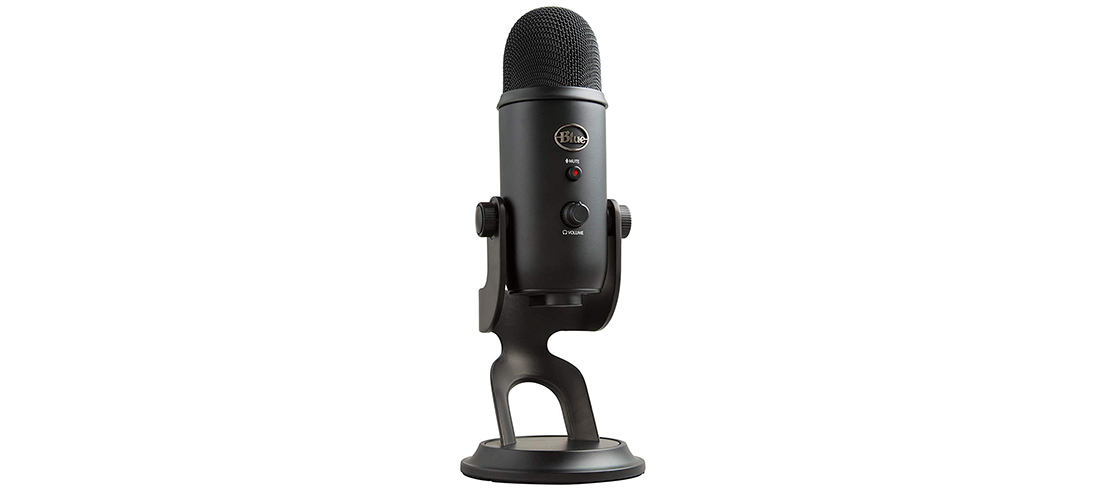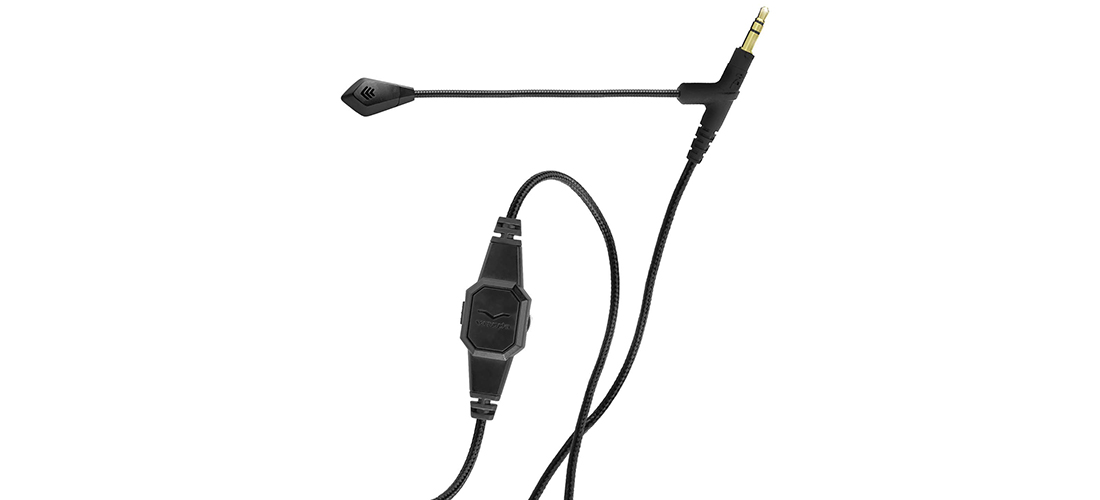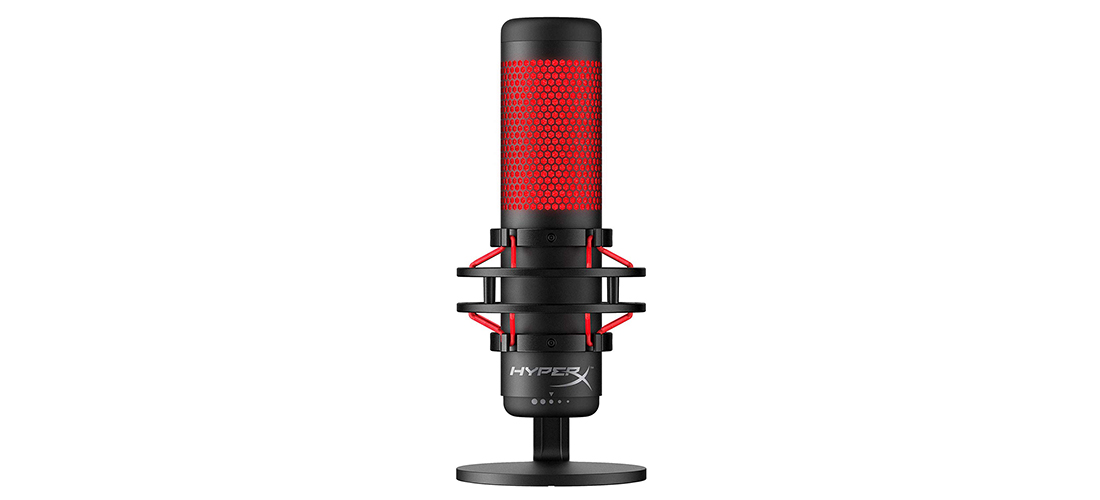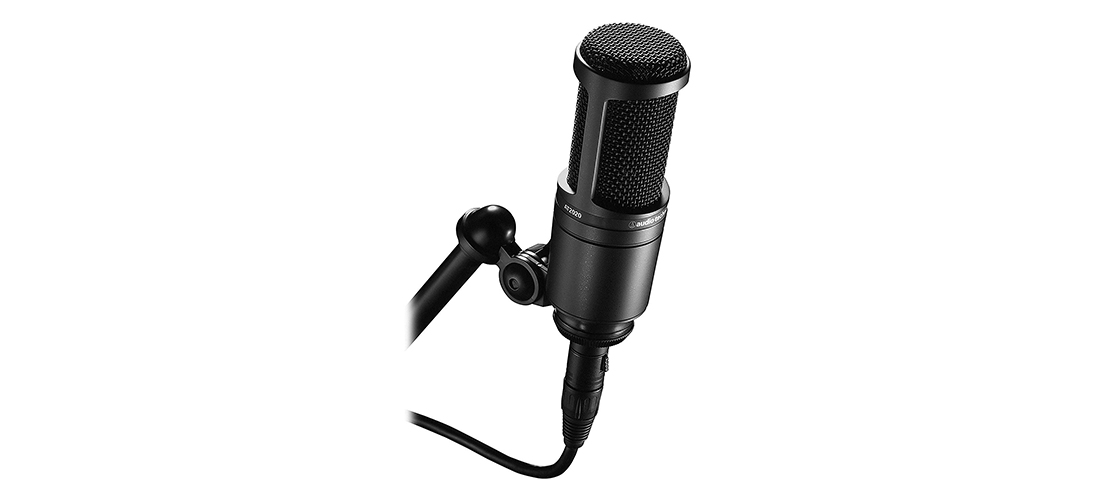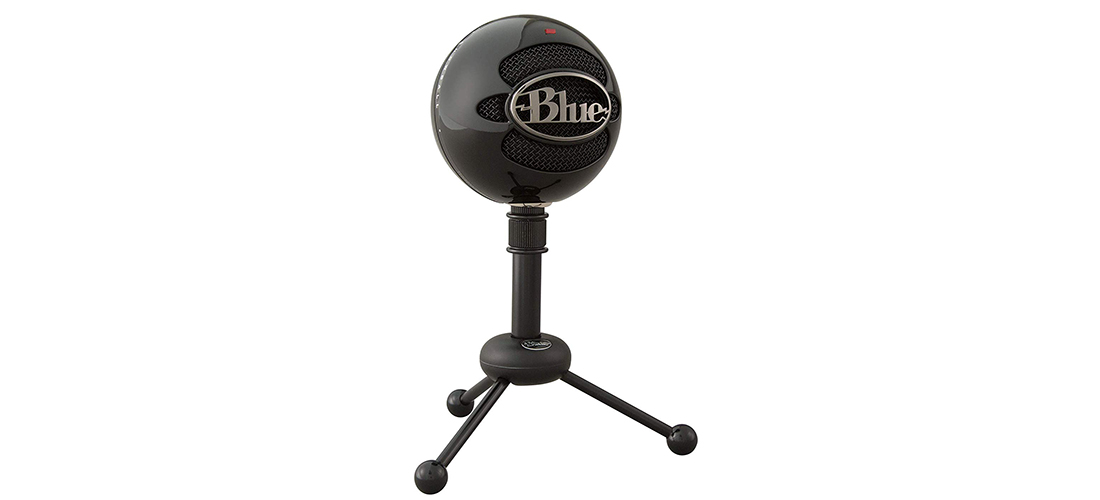Streams are becoming increasingly popular in the media sphere. If you are a gamer and want to show off, for example, the Fortnite skills or broadcast live, Twitch.tv and YouTube are decent choices. A streamer who wants to get a large audience, needs the best microphone for streaming because the process can be easily spoiled by a poor-quality sound.
Due to the mentioned unit, the voice will be heard clearly in all conditions. Bad sound is the reason why viewers quickly leave the broadcast. Therefore, to satisfy demanding viewers, everything must be of high-quality and pleasant-to-ear. In such a case you need to have good equipment.
Traditionally, the set includes the computer itself (laptop), webcam, and microphone. Most streamers think that is enough to purchase just gaming computers and you are on the top, but a good microphone is a must. When opting for one model, it is important to be guided not only by the price but also by the purpose for which the device will be purchased. For a beginner streamer, it may be pointless to buy something really expensive; a decent budget device is enough. It is important to remember the necessity to test the microphone for how your voice sounds since each device transmits it in its way. First, there must be a test record, and only then – a purchase. We tested various microphones for streaming for you. The following list is based on synopsizes, tests, and features.
Microphone for Streaming Reviews
BLUE Yeti Condenser Microphone, Blackout, Mic Only
The Blue Yeti is a versatile device that supports switching between bidirectional, omnidirectional, and cardioid polarity. Tri-capsule technology allows recording clean vocals, process voice calls, and record podcasts. Pay attention that the microphone should be located at a distance of 8 inches from your mouth, only, therefore, the pop-filter muffles the noise from breathing. Another important moment about Yeti is that its widest point is its base, which means that I didn’t have to worry about the situations when the microphone came across many obstacles on the table. Despite all the positive moments, it’s hard to perceive or recommend the unit as the best mic for streaming because the mute button does not work immediately after pushing and the black paint can be scratched off easily. This model is good for single streamers and for gamers who travel a lot. There is a built-in gain set, which is necessary if you record quiet or distant sounds and is useful for subsequent processing.
Pros
- It has a built-in amplifier for stereo headphones that allows monitoring with zero delays and volume controls.
- Microphone gain controllers are located directly on the unit that is comfortable for usage.
- There’s no need to install drivers on a PC/Mac, all the required data is downloaded by default.
Cons
- The foam layer at the bottom of the bearing element does not help damp vibrations.
- If you accidentally touch the microphone with your lips during a stream, small electric shock is possible.
V-MODA BoomPro Microphone for Gaming & Communication
This model looks like a cable with a miniature microphone. The collapsible design is made specifically for convenience and compatibility. A flexible microphone holder can be installed in any desired position (up, down, left, or right). The specified streaming mic is compatible with all the mobile devices and computers with 3.5mm jack connectors, as well as gaming systems with optional adapters. It picks up breath/whispery sounds, but such a problem can be resolved by a foam mic cover. The sound is clear and loud (in particular if compared with more expensive models). The set includes only one cord so there’s no need to worry about its managing. It can be used for connecting to a separate microphone/headphone jack on a PC via a special Y-adapter.
Pros
- 79-inch cable allows you to use the microphone freely, without worrying about the distance to the rest of the devices.
- There is a comfortable-to-use remote control on the cable with a volume adjustment.
- It weighs only 1.12 ounces and does not create discomfort.
Cons
- There’s a noise in headphones when you brush the cord against a zipper on clothes.
- It doesn’t work with preamps, designed for big professional microphones.
HyperX QuadCast – USB Condenser Gaming Microphone
The HyperX QuadCast is a microphone with 4 modes and stylish backlight, which decorates your workplace or frame during broadcasts. The case is made mainly of aluminum, creating a presentable design. It weighs only 9 ounces and a considerable share in this is a weighty stand with a rubber base. The microphone itself is mounted on the suspension and additional vibrations from the table will not be transmitted to it. HyperX QuadCast tilt can be changed. Build quality and materials are decent because there are no creaks and unreliable visible elements. The only thing that could potentially be missed is wind protection, but this peculiarity appears only when the streaming microphone is used outdoors. I definitely like that the backlight performs not only design but also a functional role, notifying that the recording is in progress.
Pros
- There is a touch button at the top to quickly turn off the recording. A light tap is enough to mute the microphone.
- HyperX QuadCast works on the plug-n-play principle, so additional software for work is not required.
- It produces pure detailed sound, with low frequencies, and almost complete absence of background noise.
Cons
- There’s no volume control.
- The mute button is easy to reach by accident, so it’s irritating.
Audio-Technica AT2020 Cardioid Condenser Studio XLR Microphone
The device records the sound in such a way that it practically does not require additional processing. It’s possible even to record the vocals with this model. The microphone can be connected in a simple way – just insert the USB-plug into the socket of a computer or laptop. It works with all systems, it doesn’t need additional software. The unit also has volume control for an optimal signal level and a “mix” control, which allows adjusting the balance between your own and incoming signals. I really like that a cardioid radiation pattern cuts off third-party sounds from the back and sides, isolating the main frontal signal. This Japanese product isn’t the best microphone for streaming, but some users may perceive it as profitable choice for their engagement.
Pros
- The device itself has a headphone jack, so you can track your voice and additional interferences.
- The unit goes on sale with no-frills, with a rigid mount on a microphone stand and a soft case for storage.
- The fast and reliable mounting of the microphone on the stand provides an accurate location at the sound source.
Cons
- It doesn’t come with an XLR cable, so the owner has to purchase it additionally.
- The assembly quality isn’t good enough because the nuts at the end of the boom are loose.
Rode NT-USB USB Cardioid Condenser Microphone
The Rode NT-USB is a good microphone for streaming; it’s fully compatible with all the common Windows and Mac programs. An Apple Camera Connection Kit adapter is required for use with an iPad. This compact device is equipped with headphone output (3.5mm jack) for stereo monitoring with zero real-time delay and controls for adjusting the monitoring level. The mic comes with a pop-filter mounted on its base, located at the required distance from the capsule to minimize explosive consonants during talking. It’s useful that the unit has volume control for self-listening + volume difference between side tone and PC sounds (for balance). The mic transmits a realistic voice, but it starts making a lot of noise when the volume after a 70% point is reached. Moreover, there’s no volume control on the microphone itself. The wire length is 118 inches, so it will allow you to remove the microphone at a considerable distance from the computer, and achieve better recording performance and move around.
Pros
- The set contains stand, a table tripod (that permits you to conveniently place it on the table), and a bag for storing the microphone.
- The considered model has a high degree of protection against radio frequency interference.
Cons
- The cord that connects to the microphone itself can be broken with a slight movement of the hand.
- There’s no basic on/off button.
Blue Snowball USB Microphone
The device is regarded as a good choice for beginners. It has a pleasant-to-eye design (due to the glossy multicolor finish) and can become an attractive decoration on the gaming desk. The Snowball is equipped with a double capsule and a switcher that operates in 3 modes (cardioid, cardioid with a filter (10dB), and omnidirectional). It’s USB-powered, so there’s no need to use bulky XLR cables (as for professional models). A little tripod is sturdy and there are no scratches on it even after falling. The microphone’s stand is supplemented by the rubber feet to get rid of slipping. The Snowball is a condenser unit, or, as it is also called, a dynamic microphone for streaming. Such a device does not need an external power source and has uniform frequency characteristics. This peculiarity makes the voice lively and conveys all shades of colloquial speech.
Pros
- The degree of inclination is adjustable.
- It comes with a metal stand, so it can be easily placed higher or lower to the streamer’s mouth without the risk to fall down.
- The unit does not require driver installation when used with PC and Mac.
Cons
- The fine-tune gain control is absent on the mic.
- Manual doesn’t contain all the useful information and doesn’t explain what the switch on the hinder side is for.
MAONO USB Microphone Kit 192KHZ/24BIT Plug & Play
The MAONO product is perceived as a reasonable good cheap microphone for streaming. Despite the fact it has a Plug and Play feature, this model is able to provide clean sound. The specified device has compact dimensions (17.2 x 8.1 x 3.4 inches), as well as a long 98-inch cable, which makes it really mobile. The kit includes not only a holder that allows you to securely lock the device but also useful pop filter and a foam windscreen. The user doesn’t have to purchase specified elements additionally because the included ones are decent accessories made of reliable materials and with good characteristics. The special wire used to connect the microphone to the computer is rather thick, which gives additional reliability. I definitely like the possibility to connect via USB rather than with the help of audio jacks.
Pros
- The adjustable stand can be easily mounted on the table and adopt the microphone to a suitable position.
- The all-metal construction looks sturdy and can possibly cope with serious loads and transporting.
- It presents a warm tone of sounding. The user can get the realistic effect due to the compression and equalization.
Cons
- There’s no possibility to change sensitivity settings and some people may have to put the mic close to face for getting the loud sound.
- It picks up all the sounds so even breathing can be heard.
Tips for Choosing the Best Streaming Mic
Before the device purchasing, pay great attention to the following aspects.
Frequency range
Remember that the wider the frequency range, the more sounds the microphone can perceive. A device with a wide range is needed for those involved in vocals. This characteristic is not so important for gaming streams, but you should not neglect it. For speech, spectrum coverage of 100-10000 Hz is sufficient. If you are poorly versed in audio, take a microphone with a wide frequency range but do not forget about other parameters.
Directivity
No matter how many viewers come to your stream — thousands or a dozen — they should all clearly hear your voice. An important role in this is played by the orientation of the microphone (or its polarity). The radiation pattern reflects the sensitivity to sound depending on the source location. Patterns are very different from each other. What gamers need is not suitable for reporters and those involved in voice acting.
- Bidirectional microphones equally well pick up sound coming from the front and back of the device.
- Unidirectional microphones are divided into cardioid, hypercardioid, or supercardioid. A cardioid microphone is highly sensitive to sounds coming from the front but not from the back. This is the most common type. It is able to perceive lateral sources but does not do it as well as hyper- and supercardioid microphones. As for these two types, their coverage angle reaches 180 degrees. They are good at picking up sound coming from the front and sides, but they have poor sensitivity to sounds coming from the back. If you are looking for a quoteworthy microphone for streaming, representatives of those types can become a good choice.
- The omnidirectional microphone has a coverage angle of 360 degrees. It picks up sound from any direction. It is not a profitable choice for gamers, as together with the voice, it will capture background noises, for example, clicks on the keyboard.
If you are not sure which option is more suitable for your occupation, pay attention to unidirectional microphones. They have several radiation patterns that can be switched if necessary.
Optional accessories
It’s nice to get something as a gift from the manufacturer along with the purchase, even if it’s a simple thing. In the case of a microphone, the most common accessory that comes bundled is a desk stand. Also, pay attention to the cable length and check if the adapter is included. A great bonus is the presence of a carrying case in the kit. It will protect the device from damage on a trip. Pop filters may also be included as they keep your microphone from explosive sounds -p and -b.
Manufacturer
Such a moment has great importance in the context of microphones. The line of units from one brand often has a certain color, timbre, and a characteristic sound with a “signature”. The easiest way is to sort out decent manufacturers, choose the ones you like, and narrow the search circle to specific models from this/these makers.
The overall sound quality
It seems to me that the sound should be as neutral as possible without “smoothing” and an obvious timbre color. I like when the device records natural, analytical, and even dry sound, with a maximum of detail. Such a record is convenient and easily can be processed later.
Stream type
It will be much easier to choose the best streaming microphone if you’ll take into account the kind of broadcasting. So, if you stream while sitting still, you can get by with a desktop microphone, a buttonhole, or a headless option. If you are cooking, playing music, or broadcasting any other video where you don’t just sit still and move around the frame, you will need boundary layer microphones (placed simultaneously in several parts of the room), a directional microphone, or a radio loop/head-mounted microphone. If guests are expected to stream, then you still need a stock of additional mics.
Voice sound tone
It is worth considering that if you have a relatively high voice, then it will be easier for you to choose the right microphone. Even cheap models for beginners do a good job with high voices. If you are the owner of deep bass, baritone, or hoarse voice, then selecting a microphone will become a problem – not every unit will cope with the full capture of your voice. In this case, you will most likely have to use professional ones and listen to many different models.

